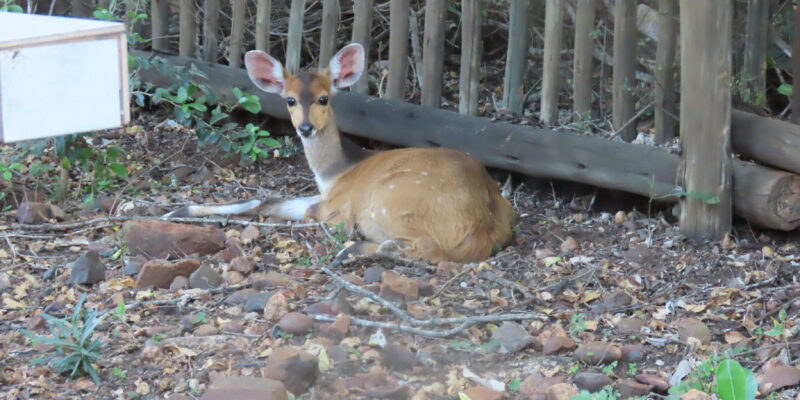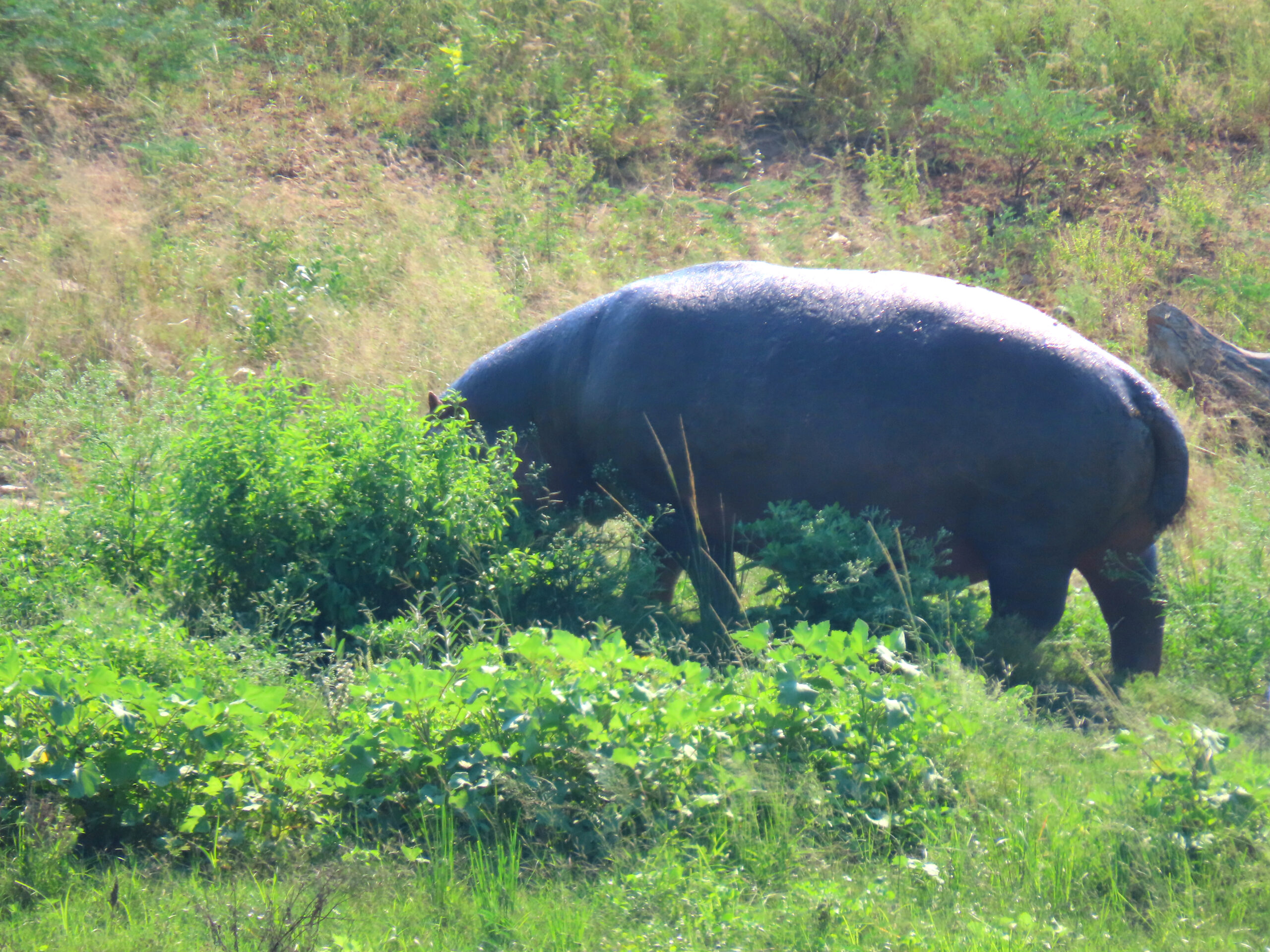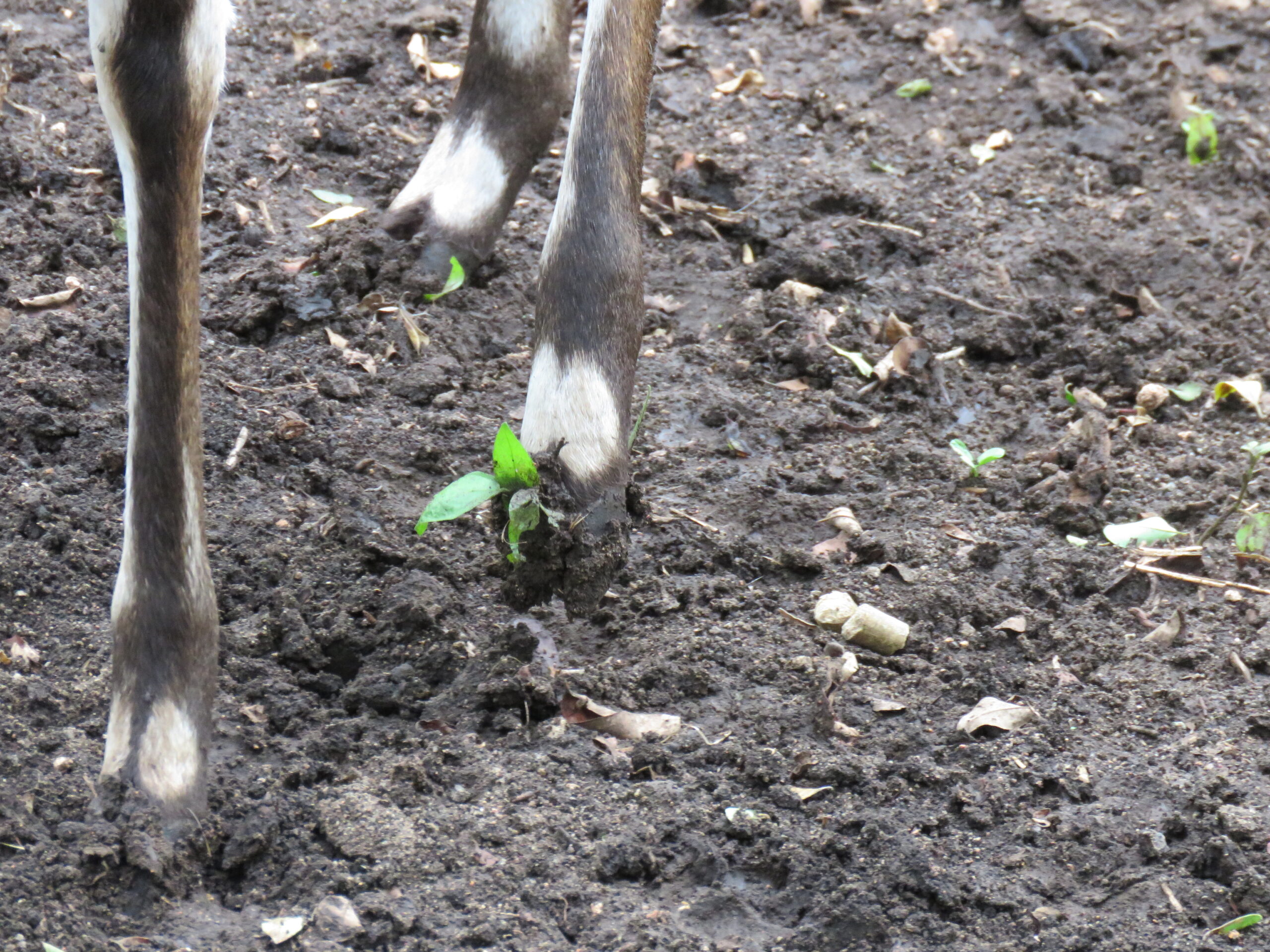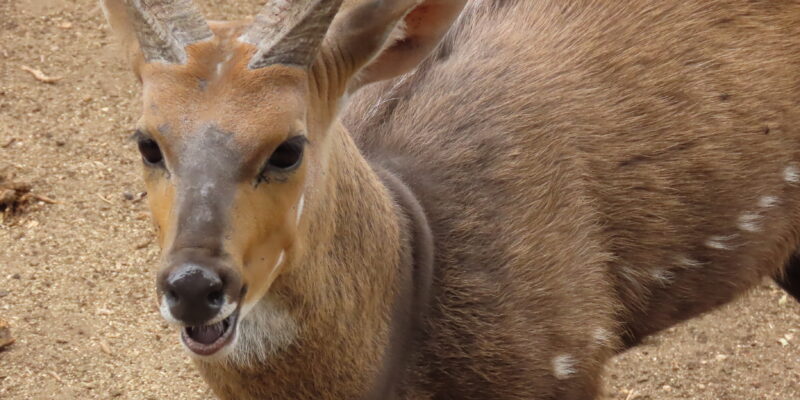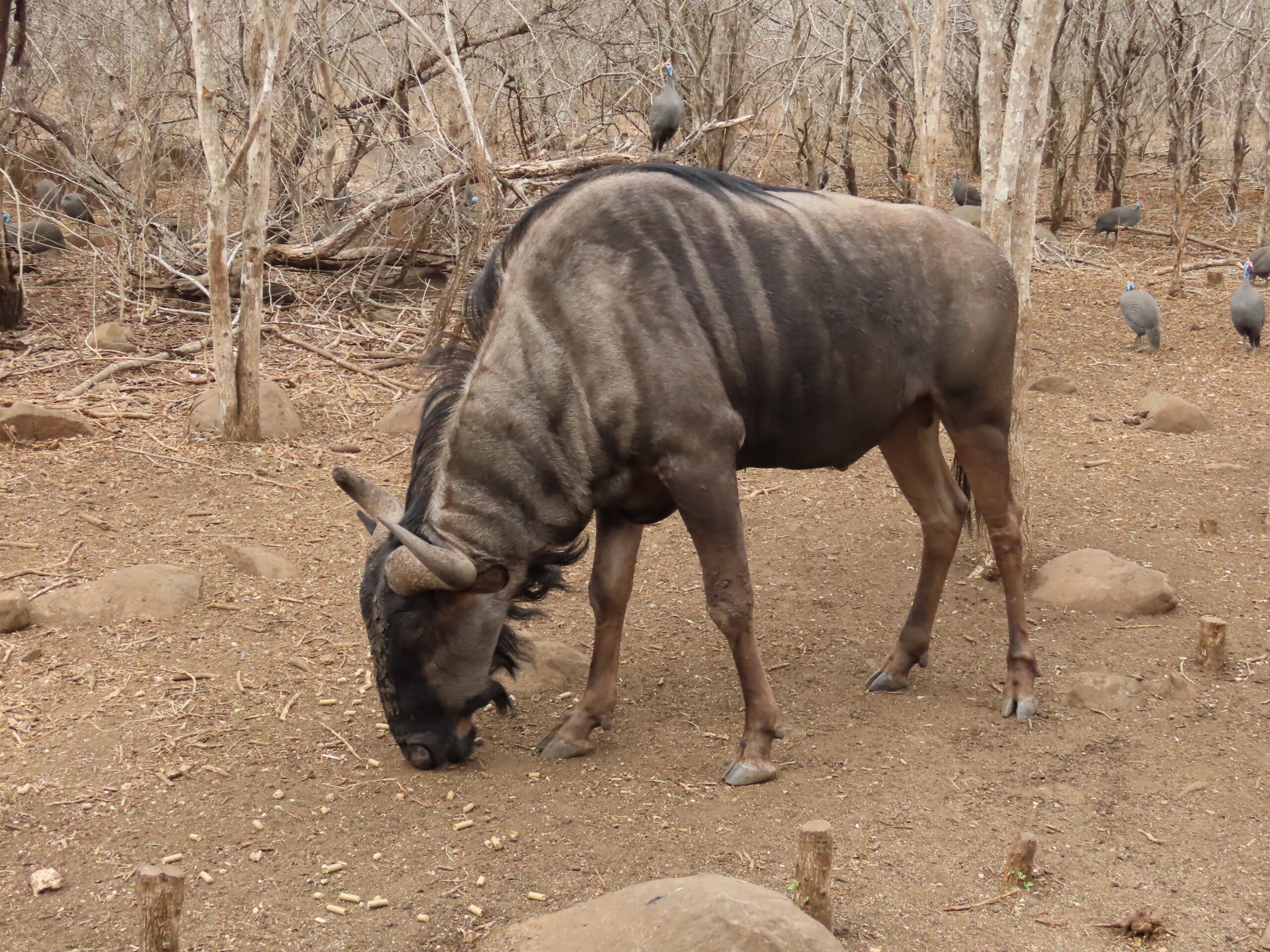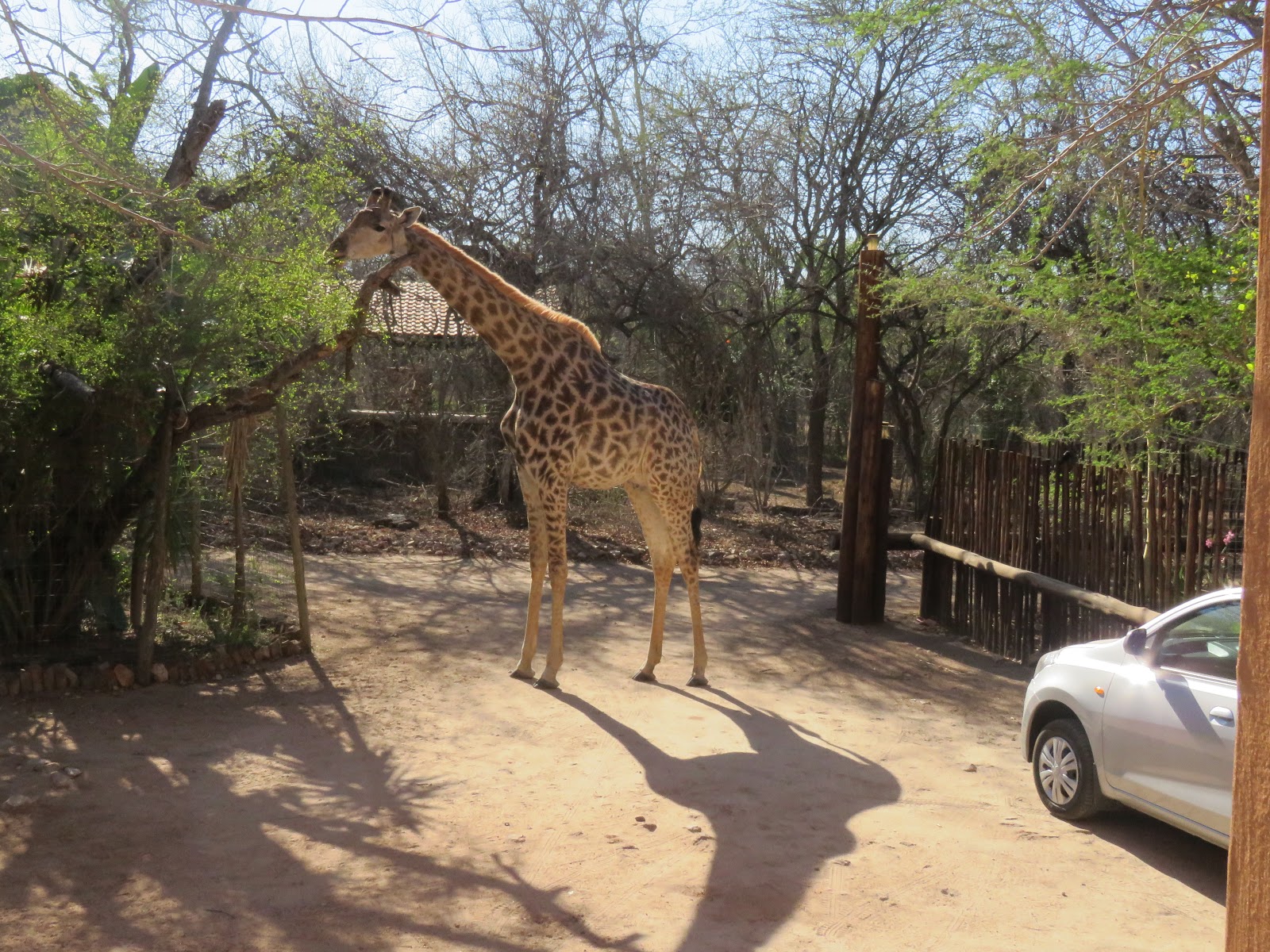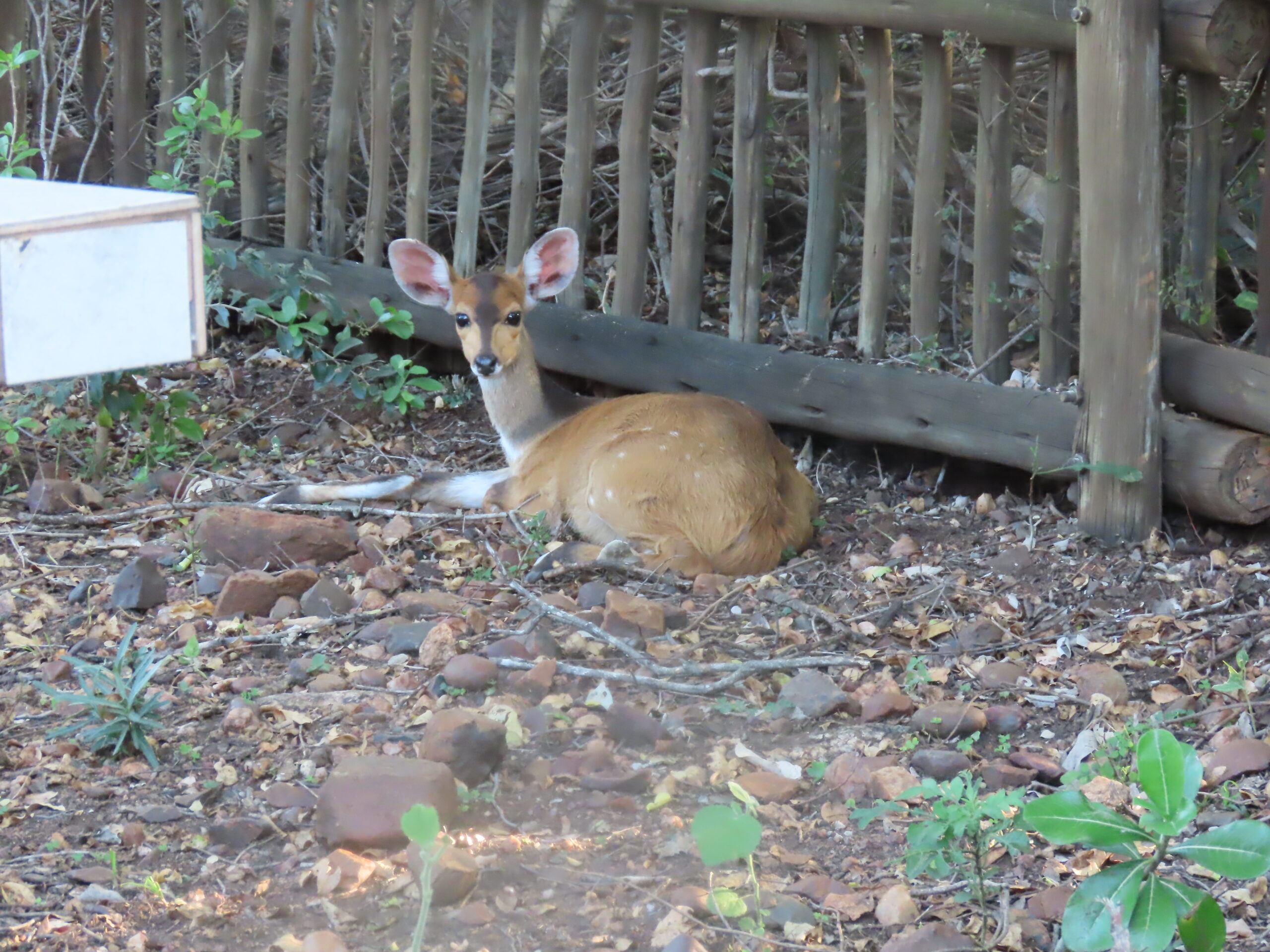
It’s been raining off and on since the middle of the night. Right now, the temperature is only 76F, 24C, but the humidity is 83% with a dew point of 70°, which is considered oppressive. In other words, while sitting outdoors, we are sweating. I finished my two cups of decaf coffee and am sweating more. Soon, I’ll switch to Crystal Light Lemonade in my big mug with lots of ice. (Tom drinks the iced tea).
When the sun comes out, the humidity and dew point will drop as the temperature rises. Today’s high is expected to be only 86F, 30 C, warm but bearable compared to the 90s of the past several days. The weather is expected to begin cooling down as we enter winter in the southern hemisphere.

The above-shown little bushbuck, maybe a few months old, has been living inside the fence surrounding the garden for several days with an injured leg that appeared swollen at the joint. Her mom came by several times a day to check on her. It was sad to
But we knew we had to report it since she would most likely never be able to jump over the little fence. We fed her several times daily, and she drank water from the birdbath. There was nothing more we could do.
This morning, I contacted Louise, and she called the rangers. Within a half hour, three rangers were here with the vet, Dr. Piet. He examined her and determined the injury was so bad she couldn’t be saved. They showed me the injury to give me peace of mind, knowing there was nothing that could be done for her.
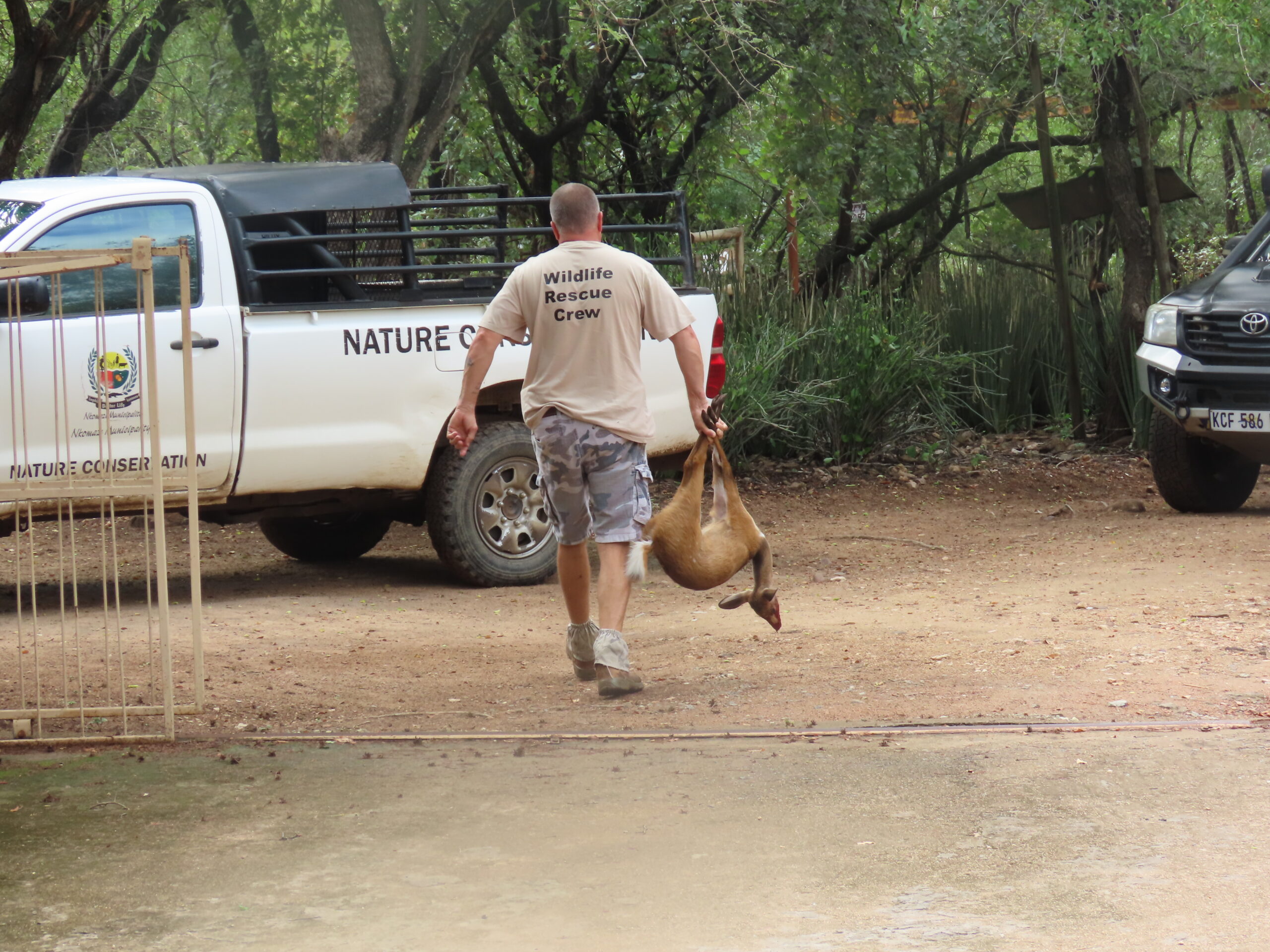
They shot her before my eyes, and I flinched with tears in my eyes. This is the reality of living in the bush. I hesitated to post the graphic photos, thinking they might be too much for some of our readers to see. But we’ve always promised to ‘tell it like it is,’ and this scenario was no exception.
If any of our readers are uncomfortable, please know that the continued suffering of the little bushbuck was more inhumane than the outcome. Although it touched our hearts, we knew it had to be done.
Her mom showed up again, and I gave her some lettuce and cabbage. She’ll likely continue to look for her for several days, but she may soon be pregnant again as the life cycle continues.
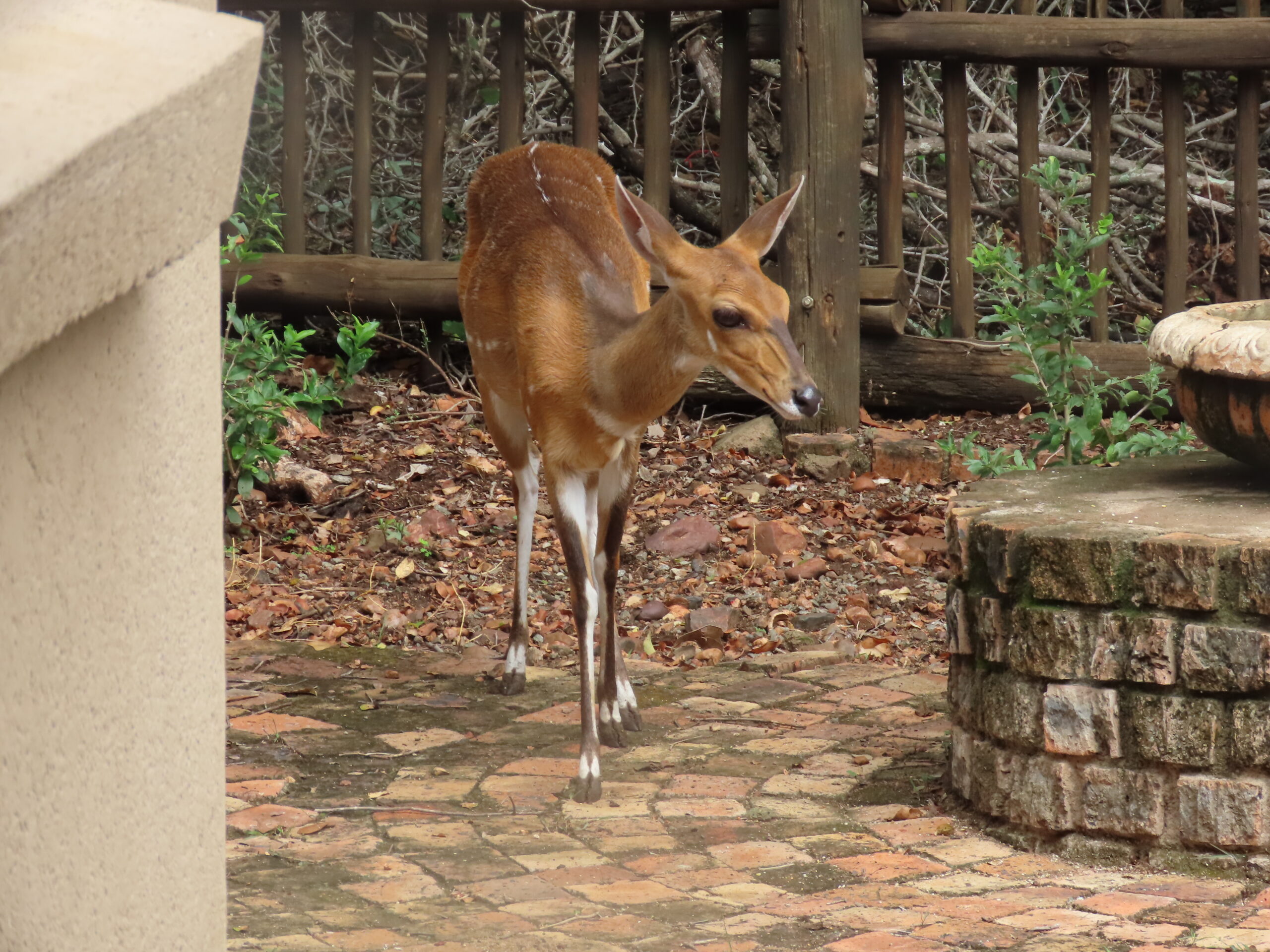
Once I upload this post, we’re heading to the local Savemor Market for a few things since we haven’t shopped in Komati since last Monday, and we need to fill in a few things for the upcoming week.
Our dear friend, Lisa, flies out of Florida tonight and will arrive by noon on Wednesday when Tom picks her up at the airport in Nelspruit. I’ll stay behind when he collects her and the next rental car and make dinner. She may be too tired to eat dinner and sit on the veranda that night, but we’ll have a meal ready for her when she feels like eating.
That’s our story from today.
Be well.
Photo from ten years ago today, March 31, 2015:


